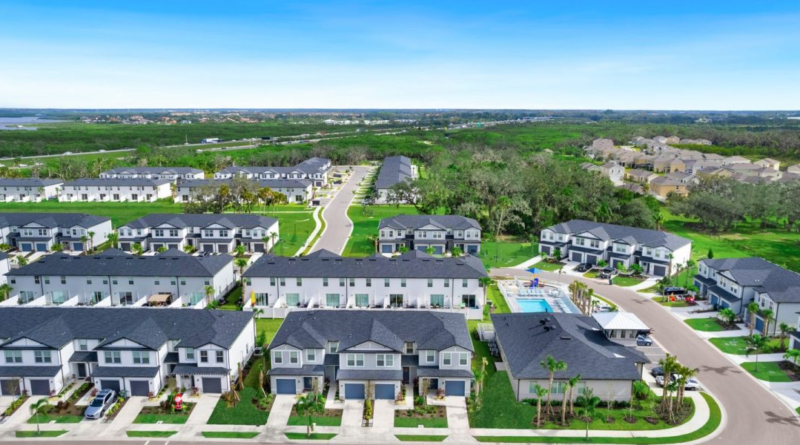JPMorgan wants to be your landlord
At first glance, there’s nothing out of the ordinary about Cantabria Bradenton. Located 46 miles south of Tampa and 14 miles north of Sarasota, the recently constructed rental community consists of 172 attached townhomes and 12 detached single-family homes on 36 acres. Cantabria Bradenton has a clubhouse, gym, and pool. It looks like a modern Florida rental community, with townhomes renting anywhere between $2,400 to $3,000.
However, under the surface, there’s something that makes it novel: The rental community is owned by J.P. Morgan Asset Management.
Earlier this month, Wolfson Development Company sold Cantabria Bradenton, which was constructed between summer 2020 and spring 2023, to J.P. Morgan Asset Management for $59 million.
When it comes to institutional homeownership, firms like Blackstone or Invitation Homes come to mind. But this Cantabria Bradenton purchase is a reminder that the U.S. housing market has the attention of Wall Street’s top dog: JPMorgan Chase.
Even before analysts realized that a housing boom would form during the pandemic, J.P. Morgan Asset Management announced in May 2020 it’d establish a $625 million joint venture with American Homes 4 Rent to build 2,500 single-family rentals across the West and Southeast. As millennials age out of apartments, JPMorgan Asset Management argued that the U.S. housing market would see increased demand for single-family rentals.
Then in November 2022, JPMorgan announced its asset-management arm would form another joint venture, this time alongside real estate investment firm Haven Realty Capital. They’d allocate $1 billion to purchase single-family rentals across the country in the form of so-called “build for rent,” meaning they’d buy directly from developers. The JPMorgan and Haven Realty Capital joint venture planned to start with the purchase of 250 homes in metropolitan Atlanta.
While JPMorgan continues to push deeper into the U.S. housing market, some institutional players are waiting things out.
See, the Pandemic Housing Boom—a period of low interest rates, soaring home prices, and sky-rocketing rents—saw a stampede of institutional home buying in 2020 and 2021. However, that boom has been followed by a sharp institutional slowdown as the Fed’s interest rate hikes, coupled with frothy home prices, cut into the potential returns.
Indeed, an analysis conducted by John Burns Research and Consulting finds that institutional investors—those owning over 1,000 homes—bought 90% fewer homes in January and February than they did in the first two months of 2022. And Invitation Homes, the largest owner of U.S. single-family rental homes, sold more homes in the first quarter of 2023 (297) than it bought (194).
“There is no space immune from capital markets, broadly speaking. Every food group in real estate, whether it’s multi-family or single-family, everyone has difficulty finding an institutional buyer right now,” says Adam Wolfson, CEO of Wolfson Development.
In Wolfson’s telling, institutional homebuyers are waiting on the sidelines for either a dip in interest rates or home prices. At the end of the day, institutional investors are looking for financial returns (i.e. cap rates) which justify their investment.
While institutional home buying has slowed down, it won’t go away. That’s perhaps the biggest takeaway from J.P. Morgan Asset Management’s purchase of Cantabria Bradenton from Wolfson Development. That’s also why Wolfson Development’s build-for-rent arm (Wolfson BTR) currently has a pipeline of 2,000 housing units “with a total exit valuation of nearly $1 billion.”
JPMorgan declined to comment. JPMorgan also declined to say how many U.S. rentals it owns.


